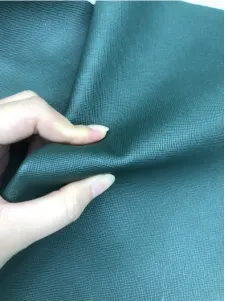When shopping for a leather bag that balances style and functionality, especially one designed to hold its shape—think briefcases, satchels, or structured totes—you might come across a material that’s praised for its rigidity and durability: cross grain leather. But before diving into its benefits, let’s address the core question: what is cross grain leather, and why does it matter for your next bag purchase?
To understand cross grain leather, we first need to look at how leather is processed. Leather is derived from animal hides, and its natural grain—the visible texture and pattern—runs in a specific direction, typically along the length of the hide. Cross grain leather, as the name suggests, is distinguished by how its grain is oriented and treated during production.
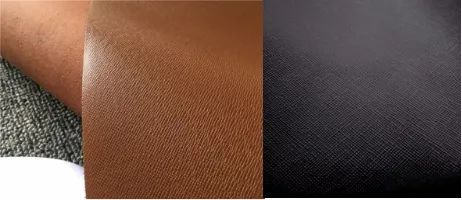
Unlike full-grain or top-grain leathers, which retain the hide’s natural grain direction, cross grain leather undergoes a unique treatment. During processing, the hide is split or buffed in a way that creates a pattern where the grain runs perpendicular (crosswise) to the hide’s original length. This crosswise orientation is what gives the leather its distinct texture—a slightly pebbled, structured look that’s both subtle and striking.
One of the easiest ways to spot cross grain leather is by its appearance. It lacks the irregular, organic markings of full-grain leather (like scars or natural blemishes) and instead features a more uniform, repetitive pattern. This consistency makes it a favorite for designers aiming for a sleek, polished aesthetic in structured bags.
Structured leather bags demand materials that can maintain their shape, resist sagging, and withstand daily wear. Cross grain leather checks all these boxes, making it a practical choice for such designs.
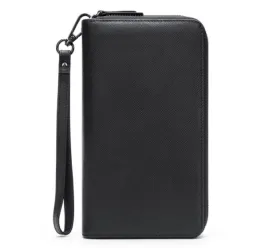
The crosswise grain orientation gives the leather inherent stiffness. Unlike softer leathers that mold to pressure, cross grain leather holds its form—ideal for bags with defined edges, rigid compartments, or structured frames. A cross grain leather briefcase, for example, won’t collapse when empty, and a satchel made from it will keep its boxy silhouette for years.
Daily use exposes bags to scratches, scuffs, and friction—especially in high-contact areas like handles or bases. Cross grain leather’s dense, compact structure makes it more resistant to these damages than softer leathers. The cross pattern acts as a barrier, dispersing impact and reducing the visibility of minor wear, which means your bag stays looking newer longer.
When exploring types of leather for bags, it’s helpful to compare cross grain leather to other popular options to understand its unique role.
Many shoppers wonder, what is Napa leather, and how does it differ from cross grain? Napa leather is known for its buttery softness and smooth texture, made from full-grain hides (often lamb or calf) treated with a special tanning process. It’s perfect for slouchy, casual bags that prioritize comfort and flexibility. Cross grain leather, by contrast, is stiffer and more structured—making it a better fit for bags that need to maintain a specific shape, like professional briefcases or formal totes.
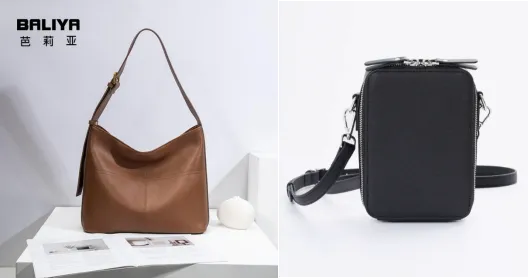
Beyond Napa, the world of types of leather for bags includes options like full-grain (natural, durable but less uniform), top-grain (smoother, slightly less durable than full-grain), and bonded leather (a more affordable, composite material). Cross grain leather sits between full-grain and top-grain in terms of processing—it’s more uniform than full-grain but retains better structure than many top-grain variants, carving out a niche for itself in the structured bag category.
To maximize the lifespan of your cross grain leather bag, proper care is key. Its unique structure requires specific attention to maintain its stiffness and appearance.
Cross grain leather’s dense texture means it doesn’t absorb liquids as easily as softer leathers, but it still needs gentle cleaning. Use a dry, soft cloth to wipe away dust, and for stains, dab (don’t rub) with a slightly damp cloth. Avoid harsh soaps or leather conditioners designed for softening—these can break down the leather’s stiffness over time.

When not in use, store your cross grain leather bag with a dust bag and stuff it with tissue paper or a bag shaper to preserve its structure. Avoid hanging it by the handles for long periods, as this can cause stretching. Keeping it in a cool, dry place prevents moisture from warping the leather’s rigid properties.
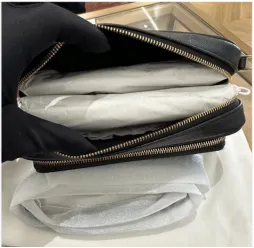
Not all cross grain leathers are created equal. Here’s how to spot a high-quality piece.
A quality cross grain leather will have a consistent, evenly spaced pattern. Avoid bags where the grain looks forced or uneven—this often indicates lower-grade leather that may wear poorly.
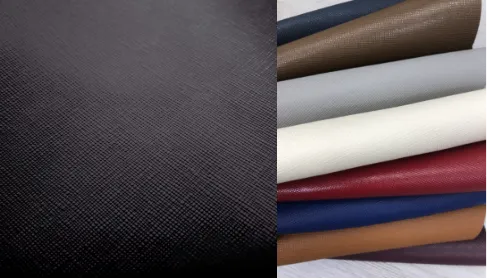
Run your hand over the leather. It should feel firm and rigid, with a slight resistance when pressed. If it feels overly soft or floppy, it may not be genuine cross grain or could be a lower-quality variant.
In the end, understanding what is cross grain leather reveals why it’s a standout choice for anyone seeking a structured leather bag that marries durability, style, and functionality. Whether you’re comparing it to other types of leather for bags or weighing it against softer options like Napa, cross grain leather’s ability to hold its shape and stand the test of time makes it a wise investment for years of use.
